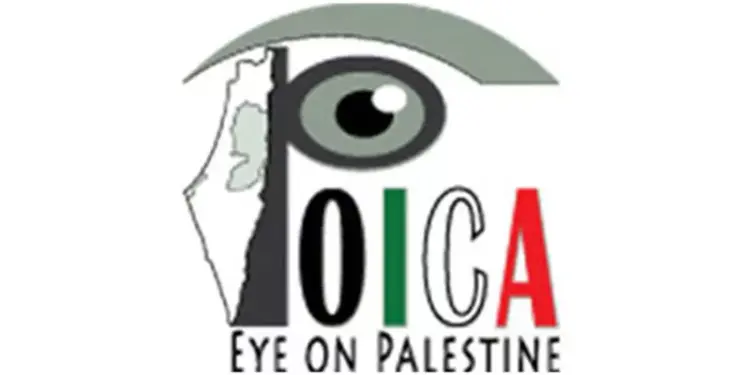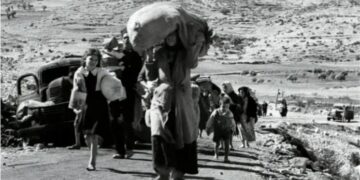Background
The Israeli-Palestinian ‘conflict’, for want of a better term, is a product of domestic, regional and international factors. Regional and international dynamics have been influential throughout the conflict and continue to play a decisive role in shaping the trajectory of events. One such factor which exerts considerable influence on domestic events in Israel and Palestine is international finance. The United States, and to a lesser extent other countries, provides excessive and disproportionate financial support to Israel. Israel receives over 30% of America’s total foreign aid budget, a budget intended to meet the needs of the global community, despite accounting for 0.001% of the world population. In 1949-1996, the total amount of US foreign aid to all of sub-Saharan Africa, Latin America and the Caribbean combined was $62,497,800,000, roughly the same amount given to Israel over the same period. Indeed, the US-Israel relationship is the most generous foreign aid transfer ever to exist between two countries. Implementing and maintaining an occupation is expensive, and the special foreign aid relationship between Israel and the US certainly facilitates its continuation. Economic aid also grants political leverage, and given the investment the US has made in Israel, it has an undeniably powerful influence in the course of events, which thus far has been directed at enabling rather than disabling the illegal occupation.
Foreign Aid and Occupation
Since World War Two Israel has been the largest overall recipient of US foreign aid in the world and in 1997 the total amount of aid given to Israel was $5,525,800,000. Israel also enjoys aid privileges not available to other countries. For example, Israel receives military aid in one payment at the beginning of the fiscal year, whilst other countries receive it in quarterly installments. Unlike other countries which have to account for how they spend foreign aid, Israel does not have to specify expenditure, meaning more often than not the US tax payer is funding illegal settlements and gross human rights violations.
As a consequence of the huge sums of foreign aid, Israel has one of the most powerful armies in the world. The majority of Israel’s military arsenal is supplied by the United States, which has transferred 226 F-16 fighter and attack jets, 89 F-15 combat aircraft, 700 M-60 tanks, 6,000 armored personnel carriers and other helicopters, missiles and bombs. The sale of weapons between nations is a daily global reality; indeed the arms trade is well established and ongoing. However, in the context of an illegal occupation whereby weaponry sold to Israel is deliberately going to be used against the occupied Palestinian population, international law is violated. Indeed, even under US domestic law it is forbidden to give military assistance to any country that violates internationally recognized human rights.
Israel also has a domestic arms industry but it is heavily subsidized by foreign aid. For example, Israel is permitted to spend US military money on weapons made by Israeli manufacturers and when Israel buys US products it requires the US to buy materials and components from Israeli manufacturers. This relationship supports the arms industry in Israel, enabling a constant supply of high powered weaponry to the IDF.
The use of force and a high tech military infrastructure is vital for maintaining an occupation, which exerts control over the future of Palestine. Military force, as in any colonial or settler enterprise, is vital for sustaining control over a population and is responsible for daily violence committed against Palestinians. The means of violence of the Israeli occupation are therefore supplied largely by foreign aid.
Political and Economic Advantages of Aid
Despite being widely recognized by international law and international institutions as an occupying power, Israel has managed to facilitate and increase the depth and scale of occupation. Routine human rights violations and violence have become normalized. The substantial body of evidence as detailed by a vast network of human rights organizations, NGOs and international institutions such as the UN, are testament to the illegality of occupation. International inaction against the Israeli regime can be best explained by the advantages of foreign aid. Recent calls by the US to back Israel against the findings of the Goldstone report reflect this notion. Human rights violations and ethnic cleansing by the Israelis state are politically inconvenient themes for the US administration, which throws huge political weight behind ensuring that charges against Israel fail to reach their natural conclusion at the highest levels of the international community. Political support from the global status quo is therefore vital in sustaining Israel’s occupation.
Furthermore, the logistics and economics of sustaining an occupation spanning nearly 42 years, 61 years if the ethnic cleansing and land seizures of 1948 are counted, would put severe strain on any state’s economy. The economic ‘burden’ of occupation would in fact seem unsustainable. An array of military bases, military personnel, 11,000 Palestinian prisoners in Israeli jails, 733 km of a separation wall, over 600 checkpoints and barriers, 199 illegal settlements and the accompanying array of 800+ km of bypass roads, tunnels, and underpasses, in addition to the costly military arsenal that Israel possesses, could not be sustained alone by the Israeli economy. The highly militarized structure of Israeli society has therefore been funded and continues to be supported by US foreign aid, at considerable cost to the US taxpayer. Indeed, it is estimated that the $84.8 billion of aid to Israel from 1949-1998 has cost US taxpayers $134.8 billion. In other words, the $14,630 every Israeli citizen has received from the US government has cost American taxpayers $23,240 per Israeli. If the substantial volume of foreign aid to Israel was cut, it is debatable as to whether Israel could continue to support the occupation.
Israel is not a country suffering from natural disasters such as drought, earthquakes or floods. Nor is it a country struggling to lift itself out of crippling poverty. Its problems, as a former US Foreign Service Officer note, ‘arise solely from its unwillingness to give back land it seized in the 1967 war in return for peace with its neighbors’. Indeed, whilst in mid 1995 US foreign aid in Latin America and the Caribbean amounted to $79 per person, in Israel over the same period, per capita aid amounted to $10,775.48, the cost of Israel to US taxpayers, as noted before, is therefore extortionate.
Foreign aid, US and other, is given as part of geo-political considerations and foreign policy aimed at increasing influence in the middle-east, it is also the oxygen of occupation, facilitating Israel’s policies of collective punishment, continuing displacement, settlement construction and illegal detention.
References:-
Prepared by
The Applied Research Institute – Jerusalem
ARIJ













